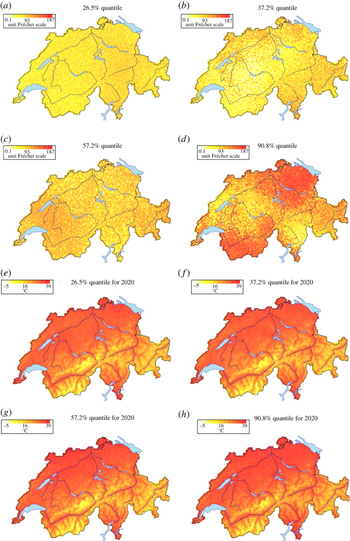Risk of extreme climate events is largely underestimated: statisticians
EPFL mathematicians have shown that the risk of extreme climate events is largely underestimated. They are developing a model for better understanding the impact of climate change.
Remember the 2003 heat wave? According to the standard weather models, it was impossible. Mathematicians from EPFL’s Chair of Statistics, however, say that there was a five in ten thousand chance for the event to occur. That’s a pretty slight chance, but not completely negligible. To reach this result, they developed a model that specifically deals with extreme weather events. Thanks to this tool, which takes into account various parameters such as climate change, the researchers are already able to more precisely predict the risk of extreme phenomena for the upcoming decades. “The problem of extremes is that there are so few events, by definition,” explains EPFL mathematician Anthony Davison. “It’s thus necessary to create specific models that are different from those that use innumerable mean values.” The researchers used MeteoSuisse data to simulate a thousand summers, using probabilities and their model of extremes. They were able to determine the risk of elevated temperatures for a given period. To arrive at conclusive results, their model groups weather stations into pairs so their measurements can be correlated. Combining the stations into pairs for the simulation requires a huge number of calculations. The number of combinatorial operations can quickly escalate. “For example, to simulate heavy rainfall, we were limited to ten weather stations, which already represented several days’ worth of calculations on a high-speed computer network,” Davison explains. In spite of this, the research is already leading to extreme events analyses that are more realistic than those arrived at using traditional models. For several years now, the scientists have noted that the increase in extreme events associated with climate change appears to be having much more of an impact on society than the increase in mean temperatures. Natural disasters are accompanied by a significant human and economic cost. In the case of exceptional heat waves, the mathematicians found that, based on global warming predictions, the probability of an event at least as severe as the 2003 heat wave will be six times greater in 2050 than it was in 2003. The specialists are also developing models for other extreme weather events, such as rain, snow, and ice. The challenge is to improve them in terms of precision. “Eventually, we would like to be able to integrate more calculation points in order to better cover the territory. We also need to optimize our models to include dynamic phenomena, which require even more operations,” Davison says. More information: Geostatistics of extremes, Davison and Gholamrezaee, Proceedings of the Royal Society A: Mathematical, Physical and Engineering Sciences (2012) vol. 468 (2138) pp. 581-608. http://rspa.royalsocietypublishing.org/content/468/2138/581.full
